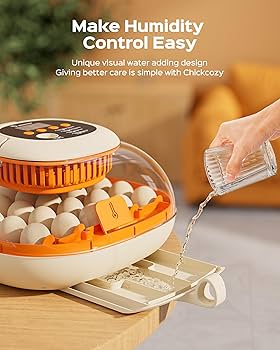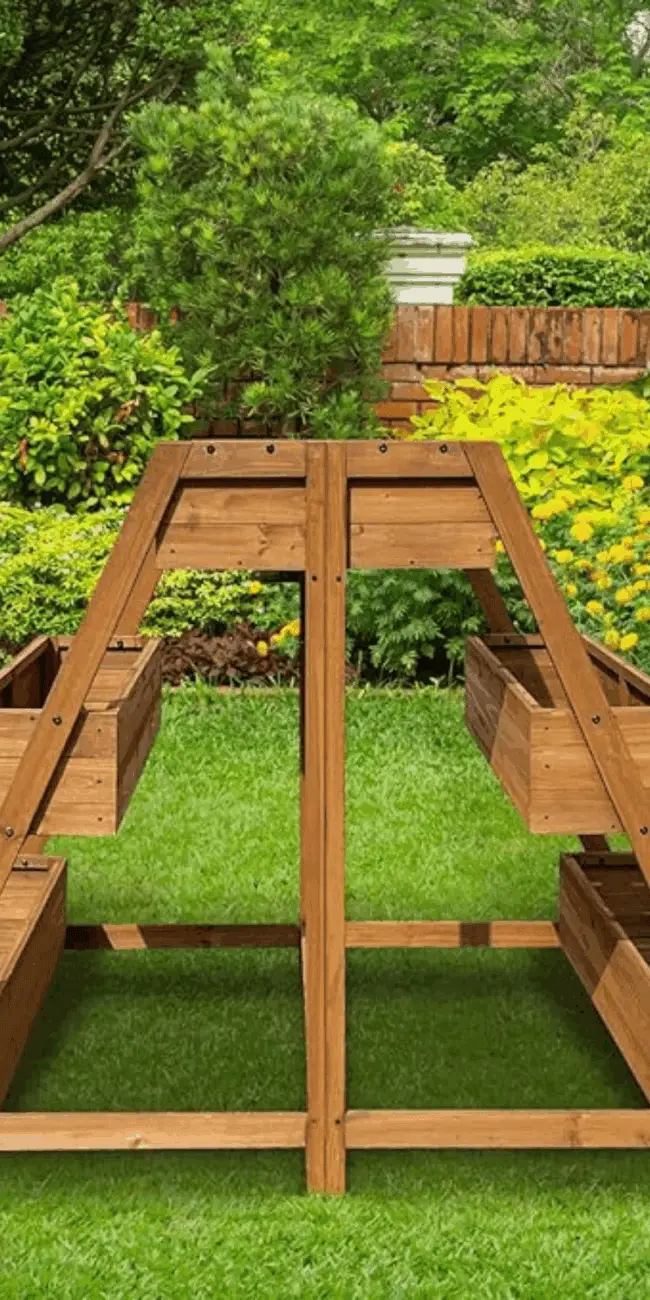Thrift stores and secondhand shopping are becoming increasingly popular among homesteaders. These individuals are looking to live a more sustainable lifestyle and reduce their impact on the environment. By shopping at thrift stores and buying secondhand items, homesteaders can save money while also reducing waste.

One of the main benefits of shopping at thrift stores is the cost savings. Homesteaders often have a tight budget and are looking for ways to save money. Thrift stores offer a wide variety of items at a fraction of the cost of buying new. This includes everything from clothing and furniture to tools and kitchenware. By shopping at thrift stores, homesteaders can stretch their budget further and invest in other areas of their homestead.
In addition to the cost savings, shopping at thrift stores and buying secondhand items is also environmentally friendly. By reusing items that would otherwise end up in a landfill, homesteaders are helping to reduce waste. This is especially important for those who are trying to live a more sustainable lifestyle. By making small changes like shopping at thrift stores, homesteaders can have a big impact on the environment.
Understanding Thrift Store and Secondhand Shopping

Thrift store and secondhand shopping is a popular way for homesteaders to save money and reduce waste. By purchasing used items, homesteaders can often find high-quality goods at a fraction of the cost of buying new. Additionally, buying used items reduces the demand for new products, which can help to reduce the environmental impact of consumerism.
When shopping at a thrift store or secondhand shop, it is important to keep in mind that the inventory is constantly changing. Homesteaders should be prepared to visit these stores frequently to find the items they need. It is also important to carefully inspect items before purchasing them, as they may have wear and tear or other damage.
One benefit of thrift store and secondhand shopping is that it can be a great way to find unique and interesting items. Homesteaders can often find vintage or antique items that are not available in stores. Additionally, thrift stores often have a wide selection of clothing, furniture, and household items, making it easy to find everything needed for a homestead.
Another important aspect of thrift store and secondhand shopping is understanding the value of the items being purchased. Homesteaders should research the market value of items before purchasing them, as some items may be overpriced. It is also important to consider the quality of the item, as a high-quality used item may be worth more than a lower-quality new item.
Overall, thrift store and secondhand shopping can be a great way for homesteaders to save money and reduce waste. By understanding the inventory, carefully inspecting items, and researching the value of items, homesteaders can find high-quality goods at a fraction of the cost of buying new.
Choosing the Right Thrift Store

When it comes to thrift store shopping, finding the right store is essential. Homesteaders who are looking for quality items at affordable prices need to be selective about where they shop. Here are a few things to consider when choosing the right thrift store:
Location
The location of the thrift store is an important consideration. Homesteaders who live in rural areas may have limited options when it comes to thrift stores. However, those who live in urban areas may have more choices. It’s important to choose a store that is convenient to get to and easy to navigate.
Quality of Merchandise
The quality of the merchandise is another important consideration when choosing a thrift store. Homesteaders should look for stores that have a good selection of high-quality items. They should also inspect items carefully before purchasing to ensure that they are in good condition.
Prices
Thrift stores are known for their affordable prices, but not all stores are created equal. Homesteaders should compare prices between stores to find the best deals. They should also look for stores that offer discounts or promotions.
Customer Service
Finally, homesteaders should consider the level of customer service provided by the thrift store. Friendly and helpful staff can make the shopping experience more enjoyable. Homesteaders should look for stores where staff are knowledgeable about the merchandise and able to answer questions.
Overall, choosing the right thrift store takes some research and consideration. Homesteaders who take the time to find the right store will be rewarded with quality items at affordable prices.
Navigating the Thrift Store

Thrift stores can be overwhelming for first-time shoppers, but with a little bit of knowledge and strategy, finding quality items and negotiating prices can be a breeze.
Finding Quality Items
When secondhand shopping at a thrift store, it’s important to keep an eye out for quality items that will last. Here are some tips for finding quality items:
- Look for well-made items: Check the seams, zippers, and buttons to make sure they are sturdy and in good condition.
- Inspect for wear and tear: Look for signs of wear and tear, such as holes, stains, or fading. Minor wear and tear can often be fixed, but major damage may not be worth the investment.
- Check for brand names: Some thrift stores specialize in high-end brands, so keep an eye out for designer labels.
Negotiating Prices
Thrift stores often have flexible pricing, so don’t be afraid to negotiate. Here are some tips for negotiating prices:
- Bundle items: If you’re interested in multiple items, ask if the store can offer a discount for buying in bulk.
- Point out flaws: If an item has minor flaws, such as a missing button or small stain, point it out to the store employee and ask if they can lower the price.
- Wait for sales: Many thrift stores have regular sales, so consider waiting for a sale to purchase items at an even lower price.
By following these tips, homesteaders can navigate the thrift store with confidence and find quality items at affordable prices.
Essential Items for Homesteaders

Homesteaders often rely on thrift stores and secondhand shopping to find essential items for their homes. These items can be expensive when purchased new, but can often be found in good condition at a fraction of the cost when shopping secondhand. Here are some essential items that homesteaders should look for when shopping at thrift stores and secondhand shops:
Kitchen Equipment
Homesteaders need a variety of kitchen equipment to prepare and preserve the food they grow. Some essential items to look for include:
- Canning jars and lids
- Cast iron skillets and Dutch ovens
- Stainless steel pots and pans
- Food dehydrators
- Food processors and blenders
- Bread machines
- Pressure cookers
Gardening Tools
Homesteaders spend a lot of time in their gardens, so having the right tools is important. Some essential gardening tools to look for include:
- Shovels, rakes, and hoes
- Pruners and loppers
- Wheelbarrows and garden carts
- Garden hoses and watering cans
- Seed starting trays and pots
- Garden gloves and knee pads
Furniture
Homesteaders often need furniture to furnish their homes, but may not have the budget for new pieces. Some essential furniture items to look for when secondhand shopping include:
- Bookshelves and storage cabinets
- Desks and office chairs
- Kitchen tables and chairs
- Sofas and armchairs
- Beds and dressers
- Outdoor furniture
By shopping at thrift stores and secondhand shopping, homesteaders can find essential items for their homes at a fraction of the cost of buying new. With a little patience and persistence, they can build a comfortable and functional home without breaking the bank.
Cleaning and Restoring Secondhand Items

When shopping at thrift stores and yard sales, it’s important to keep in mind that many of the items may need a little TLC before they are ready for use. Cleaning and restoring secondhand items is an essential step to ensure they are safe and functional.
Disinfecting Purchases
One of the first things to do when bringing home secondhand items is to disinfect them. You never know what kind of germs or bacteria may be lurking on the surface. Here are a few tips for disinfecting secondhand purchases:
- Clothing: Wash clothing in hot water with detergent and a cup of white vinegar to kill bacteria and remove any odors.
- Furniture: Wipe down furniture with a solution of equal parts water and white vinegar. For upholstered furniture, use a fabric-safe disinfectant spray.
- Kitchenware: Soak dishes and utensils in hot water with dish soap and a tablespoon of bleach. For cutting boards, use a solution of water and white vinegar.
- Electronics: Wipe down electronics with a disinfectant wipe or a cloth dampened with rubbing alcohol.
Repairing Damaged Goods
Sometimes secondhand shopping items may have minor damage or wear and tear. With a little effort, many of these items can be repaired and restored to their former glory. Here are a few tips for repairing secondhand purchases:
- Clothing: Repair small holes and tears with a needle and thread or iron-on patches. Replace missing buttons or zippers.
- Furniture: Tighten loose screws and bolts. Sand and refinish wood furniture. Replace missing or damaged hardware.
- Kitchenware: Repair chips and cracks in dishes and glassware with epoxy or super glue. Sharpen dull knives.
- Electronics: Replace missing or damaged parts. Clean dust and debris from inside electronics.
By taking the time to clean and restore secondhand purchases, homesteaders can save money and reduce waste while still enjoying quality items.
Selling Unused Items

One of the benefits of thrift store and secondhand shopping is that it can help homesteaders declutter their homes and earn some extra cash. Instead of letting unused items gather dust, homesteaders can sell them to thrift stores or online marketplaces.
When selling unused items, it’s important to do some research to determine their value. Homesteaders can check online marketplaces or thrift stores to see how much similar items are selling for. They should also consider the condition of the item and whether it is in demand.
Homesteaders can sell their items through various channels, including online marketplaces like eBay or Craigslist, local consignment shops, or even hosting a yard sale. It’s important to choose the right channel for the item and to set a fair price.
Selling unused items not only helps homesteaders earn some extra cash, but it also reduces waste and encourages a more sustainable lifestyle. By giving items a second life, homesteaders can contribute to a more circular economy and reduce their environmental impact.
Conclusion

Thrift store and secondhand shopping can be a great way for homesteaders to save money and find unique items for their homes and farms. By shopping secondhand, homesteaders can reduce their environmental impact by keeping items out of landfills and reducing the demand for new products.
When shopping at thrift stores and secondhand shops, it is important to keep in mind that items may be gently used or have some wear and tear. However, with a little creativity and DIY skills, homesteaders can often transform these items into something new and useful.
Overall, thrift store and secondhand shopping can be a fun and rewarding experience for homesteaders looking to save money and reduce their environmental impact. By keeping an open mind and being willing to put in a little effort, homesteaders can find great deals and unique treasures for their homes and farms.








